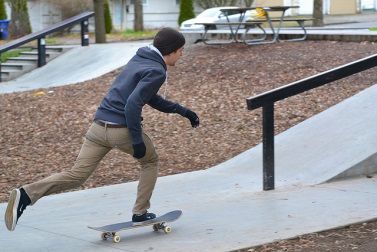Whether you have skated since you were a child or you are starting to practice skateboarding for the first time, there are some helpful pointers to keep in mind, which can save you a lot of time and trouble spent on accidents and mishaps.
Well known tips and tricks put together by experienced skateboarders, including pro skateboarders are published in various books, as well as in skateboarding magazines which you can subscribe to. Some of the points they all have in common are that you should begin in a safe setting, to practice skateboarding for the first time. Good choices are skateboarding parks, or remote locations without traffic, children, pets and pedestrians. This can spare you from many accidents common to new skateboarders.
It won’t spare you from the bumps and bruises that are part of learning to skateboard. Having a partner to practice skateboarding with can though, as you can look out for each other and help to prevent accidents. Once you’re steady on your board and ready to start some tricks, it is a good idea to wear a helmet and long pants to at least partially protect your body.
As you practice skateboarding more, you will want to get in touch with the skateboarding community and this is done both at skate parks and online. There are countless skateboard forums and skateboard news blogs, which give a lot of great advice and provide a platform for skateboarders to exchange ideas.
Online you can also find instructional skateboarding courses which include videos of ollies, kickflips and many more skateboarding tricks. Practice skateboarding on flat surfaces as much as you can, before starting with ramps and complicated spins and jumps.
The more you practice skateboarding, the better at it you will become. Don’t delay—get started with your skateboarding training today!
Photo Credit:Yuri Levchenko
Login to
Don't have an account?
Access Free
Access Free




